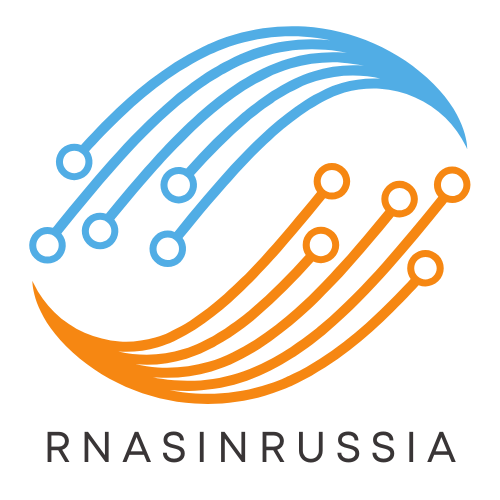Table of Contents
ToggleProgramming might seem like a mysterious art reserved for tech wizards, but it’s really just a way of talking to computers. Imagine having a conversation where you tell your computer exactly what to do, and it listens—most of the time! Whether it’s creating a website, developing an app, or automating mundane tasks, programming is the magic wand that makes it all possible.
Understanding Programming Basics
Programming serves as a vital skill in today’s digital world. It enables communication with computers and executes complex tasks efficiently.
What Is Programming?
Programming represents the process of writing instructions for computers. These instructions, known as code, dictate how software and applications function. Different programming languages, like Python, Java, and C++, provide unique syntax and rules. Each serves specific purposes, such as web development, data analysis, or systems programming. Mastering programming not only serves technical tasks but also fosters problem-solving skills, creativity, and logical thinking.
Importance of Learning Programming
Learning programming opens numerous opportunities across various fields. Professionals in software development, data science, and cybersecurity rely heavily on these skills. Enhanced job prospects often accompany programming knowledge, as demand for tech-savvy individuals continues to rise. Individuals who understand programming can innovate and automate repetitive tasks, increasing efficiency in workplaces. Moreover, grasping this skill fosters critical thinking and improves overall cognitive capabilities.
Getting Started with Programming

Programming introduces individuals to the fundamentals of instructing computers. It’s essential to grasp both the language and the environment in which to code.
Choosing a Programming Language
Selecting a programming language depends on specific goals. For beginners, Python often emerges as a top choice due to its simplicity and readability. Java is ideal for web applications and mobile development. C++ provides control over system resources, making it suitable for high-performance applications. Researching project requirements can guide this choice, as various languages cater to specific tasks and industries. Prioritizing ease of learning and community support enhances the coding experience and speeds up the journey.
Setting Up Your Development Environment
Establishing a development environment is crucial to start programming effectively. Install an Integrated Development Environment (IDE) like Visual Studio Code or PyCharm for seamless coding and debugging. Configuring essential tools such as version control with Git simplifies tracking changes and enhances collaboration. Ensure that all necessary libraries and dependencies align with your chosen language. Customizing the environment to fit personal preferences can boost productivity. Finally, maintaining an organized workspace paves the way for efficient coding practices.
Learning Programming Concepts
Programming concepts form the foundation of effective coding. Mastering these principles enables individuals to write efficient and functional code.
Variables and Data Types
Variables hold data values that programs use. Each variable must have a specific data type, like integer, string, or float. For instance, an integer stores whole numbers while a string stores text. Choosing the correct data type impacts memory usage and performance. Many programming languages require declaring the variable type explicitly, while others allow type inference. Understanding these distinctions helps programmers make informed decisions.
Control Structures
Control structures dictate the flow of a program’s execution. They include conditional statements like if-else and loops such as for and while. Conditional statements allow the program to perform actions based on specific criteria. Loops enable repeated execution of code blocks, streamlining tasks. For example, a for loop iterates through numerical ranges, while a while loop continues until a defined condition is met. Mastery of control structures enhances program logic and efficiency.
Functions and Methods
Functions and methods encapsulate reusable code blocks that perform specific tasks. A function typically accepts inputs, processes them, and returns an output. In contrast, methods are functions associated with an object in object-oriented programming. Both simplify coding by promoting reusability and organization. An example of a function might be a simple calculator that adds numbers together. Organizing code into functions makes it more manageable, enhancing readability and maintenance.
Building Your First Program
Starting a programming project involves crafting the initial code, an exciting step into the world of development. This phase lays the groundwork for logical problem solving and creativity.
Writing Your First Lines of Code
Begin with the basics when writing your first lines of code. Select a programming language like Python for its beginner-friendly nature. Open the Integrated Development Environment (IDE) previously installed. Type a simple instruction, such as print("Hello, World!"), to display a message. This action illustrates how code translates into computer actions and sets the stage for more complex programming tasks. Experimenting with small statements enhances familiarity with syntax and language workflows. Progress builds as confidence grows with each successful command.
Debugging and Testing Your Program
Debugging is a crucial process in programming. It involves identifying and correcting errors within the code. Start testing your program regularly during development instead of waiting until the project is complete. Use built-in debugging tools or simple print statements to trace the code’s execution path. Understanding error messages helps clarify issues. Run test cases to ensure programs perform as expected under various conditions. Continuous testing and adjustment create streamlined applications and reinforce the importance of maintaining functionality in software development.
Resources for Learning Programming
Learning programming benefits from various resources available for different learning styles. Online courses and tutorials provide flexibility and interactive experiences.
Online Courses and Tutorials
Websites like Codecademy, Udemy, and Coursera offer structured courses tailored to beginners and advanced learners. Codecademy provides hands-on coding exercises, while Udemy features diverse topics covering multiple languages. Coursera partners with universities, offering comprehensive programs that culminate in certificates. Each platform allows learners to progress at their own pace, enhancing their understanding of coding concepts. Many courses include quizzes and projects that reinforce knowledge through practical application.
Books and Documentation
Books such as “Automate the Boring Stuff with Python” and “Eloquent JavaScript” serve as excellent resources for learners who prefer traditional methods. These texts explain programming principles clearly and provide practical examples. Documentation from programming languages, like Python.org and Java documentation, offers in-depth insights and usage guidelines. Utilizing books and official documentation helps learners grasp foundational concepts while providing reference materials for future projects. Each resource plays a vital role in developing robust programming skills.
Programming isn’t just for tech experts; it’s a valuable skill anyone can learn. By understanding the basics and utilizing the right resources, individuals can unlock a world of opportunities. Whether it’s through online courses or books, the path to mastering programming is accessible and rewarding.
As the demand for skilled programmers continues to grow, embracing this skill can lead to enhanced career prospects and personal growth. With practice and dedication, anyone can become proficient in coding and make meaningful contributions in various fields. The journey of programming is not just about writing code; it’s about fostering creativity and problem-solving abilities that can be applied in countless areas of life.





